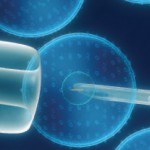

At a meeting I attended recently, I heard a series of dazzling talks on human genetics. The meeting was held in a venerable and majestic city in Europe, but the venue was a modern hotel near the airport. Unlike some European hotels that provide only one towel—a veritable washcloth—this place was downright American in the luxuriousness of the drying equipment. Three large expanses of fluffy white cotton along with hand towels and bars of free soap decorated my bathroom. Apparently, the Green Revolution must be meeting stiff opposition as the once Spartan hotels of old Europe are getting Hiltonesque to meet the demands of travelers who want their towels smelling clean and daisy fresh no matter how much laundry detergent pours into the Rhine, Seine, or Danube.
The talks at the meeting described the striking progress in unraveling the genetics of autoimmune disease. Because of advances in chip technology and bioinformatics, new analytic platforms can assess thousands and millions of snips (SNPs or single-nucleotide polymorphisms) in days (Hours? Minutes?) for the price of pennies. The visionaries in the genetic avant garde claim that it will soon be possible to obtain a person’s full genome sequence for a thousand dollars.
I do not doubt the power of the technology, although I am skeptical about the business model. After all, the charge for a uric acid test was only a few bucks, and this very useful test was dropped from multiphasic screening because it was not considered cost effective. Knowing the powers that be in the business office, I suspect that the cost of a gene screen will skyrocket, especially if each SNP is billed separately for over the 20,000 genes that can be currently assessed.
Along with the boost in the extent of SNP testing, current research demands studies of an ever larger number of patients, with one study presented at the conference involving 100,000 patients to analyze the genetic determinants of height. The magnitude of these studies should not be surprising. Most (perhaps all) human traits are very complex and involve multiple genes and gene–gene interactions of dizzying complexity. Sorting out these patterns will be a heroic effort because of the enormous genetic variation in the population. With the mixing and matching that goes on in the mysterious pairings in human reproduction, genetic studies in the future will involve, to paraphrase the late Carl Sagan, billions and billions of data points.

